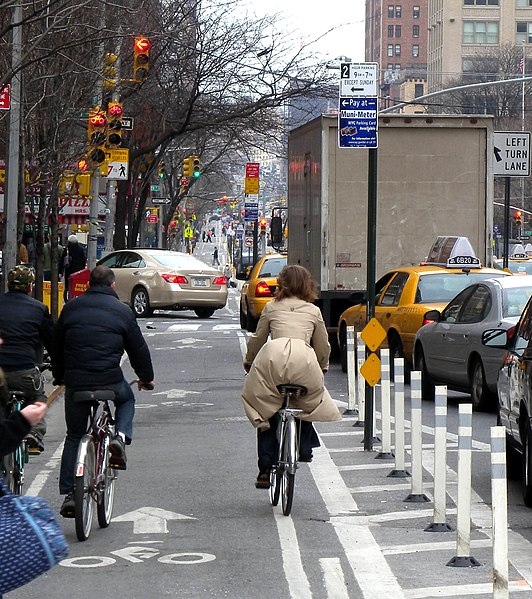Cycling in New York City is associated with mixed cycling conditions that include dense urban proximities, relatively flat terrain, congested roadways with stop-and-go traffic, and streets with heavy pedestrian activity. The city's large cycling population includes utility cyclists, such as delivery and messenger services; cycling clubs for recreational cyclists; and increasingly commuters. Cycling is increasingly popular in New York City; in 2018 there were approximately 510,000 daily bike trips, compared with 170,000 daily bike trips in 2005.
Citi Bike bike share service, which started in May 2013
The 9th Avenue bicycle lane in Chelsea, Manhattan pictured in 2009
Carrying boxes on Madison Avenue, 2008
Motorized delivery bike for a restaurant, with chain, lock, and plastic bags on handles to protect from winter wind
Manhattan Waterfront Greenway
The Manhattan Waterfront Greenway is a waterfront greenway for walking or cycling, 32 miles (51 km) long, around the island of Manhattan, in New York City. The largest portions are operated by the New York City Department of Parks and Recreation. It is separated from motor traffic, and many sections also separate pedestrians from cyclists. There are three principal parts — the East, Harlem and Hudson River Greenways.
Hudson River Waterfront Walkway near the Manhattan Cruise Terminal
A less busy Manhattan Waterfront Greenway in the snow
The scene following the 2017 New York City terrorist truck attack on the Greenway
The narrowest part of the East River Greenway in the East Village








